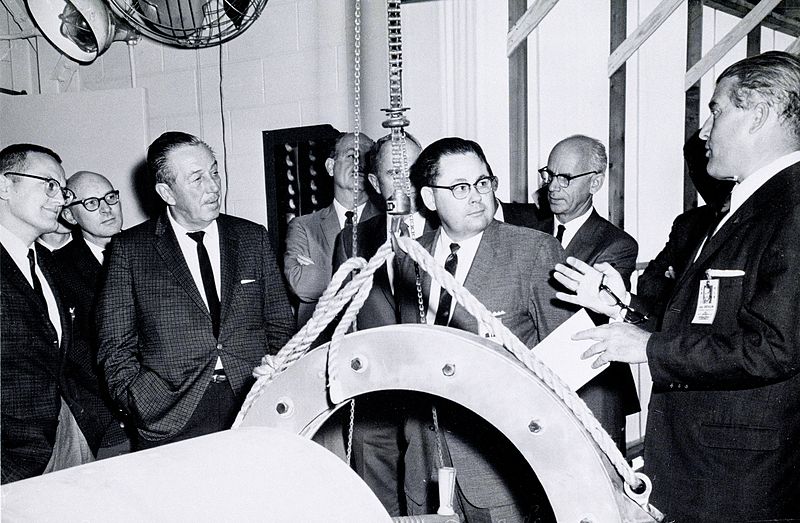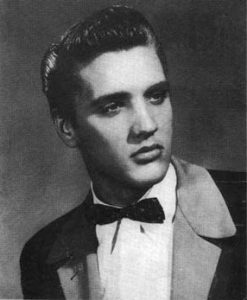Families throughout the United States faced hard times during the late-1930s. People were still recovering from the effects of the Great Depression, unfulfilled promises from President Roosevelt’s New Deal, and unemployment.1 During these financially troubled times, two dreamers, brothers Roy and Walt Disney, were on a mission to continue to produce quality animation on a fixed budget. After Fantasia‘s disappointing initial grossing, Disney Animation Studios’ debt was edging toward $3 million, which led to Walt Disney cutting all of his animators’ salaries. Although Roy Disney believed that this would undermine everything the two had built, he realized the only alternative was to sell their films through a franchise or file for bankruptcy, and so he agreed to the arrangement, unaware of the wrath that would follow.2

Tensions rose as animators also noticed a change in Walt Disney’s attitude toward them. The once cheerful man who was full of magic soon lost that touch, becoming distant to the people around him. Walt began to take all the credit for the animations that were being produced, and his employees soon realized that their pay was much lower than Disney’s salary. His ‘in-betweeners’ and clean up men were making $20 at the most, while his animators, ranging from amateurs to professionals, made between $75 and $300 weekly. Walt brought home a salary five times what his highest paid animators were bringing home.3
These pay disparities led his beloved animators to walk out on the company. On May 28, 1941, employees were greeted by hundreds of their coworkers waving signs preventing them from entering the studio. Although the exact number of employees who went on strike differs between sources, it is estimated that roughly one-third of the 1200 employees went out that morning. For the first few days of the strike, employees exchanged jokes and banter. The animators held up picket signs with clever illustrations that depicted their true emotions. One that struck deep to the studio was a picture of Walt Disney’s face in a cartoon style with crossed eyes and the caption “I can’t see why they’re unhappy.”4 Walt refused to give in to the demands of his employees, because he did not feel that they needed the increase in pay. This firm stance left the strike to go on for five whole weeks, tearing apart the company’s unity. This tension led Walt to leave for South America to take some time away from work, while he let go almost half of his team. After a bank representative for the company stepped in to review the case, the studio was sustained in favor of the animators leading to the dispute being settled. Though a treacherous three and a half months had passed, work finally resumed at the studio in Burbank, California with 694 employees on September 16, 1941.5

Just as everything seemed to be falling into place, the unimaginable happened. On December 7, 1941, the Japanese Navy Air service struck down on the United States naval base in Pearl Harbor sending the United States into World War II. Panic set in for the animators again as the cost of the films being produced during this time put a damper on the company’s overall budget.6 During this time, Walt and his company were sought out to produce cartoons for the armed services as morale builders. They also used half of the animation studio to house antiaircraft troops that were fighting during World War II. Although the company seemed to be taking on too much, this engagement would inspire Walt to create a few propaganda short films and war posters of his own that would speak to the people of the United States. Of all of the animation produced during the war, the most notable piece was Der Fuehrer’s Face, an animated short film in which Donald Duck dreams he is working in a German factory, all while ridiculing Adolf Hitler. The combination of housing troops in the studio, producing short films that expressed the idea of America’s freedom, and the efforts to inspire those fighting for the United States broaden the brand as a whole, showing every single American know what the Disney company stood for at the time.7
Though Walt himself did not find very creative success regarding his work toward the government propaganda animation and posters, it paid off very well for the company, raising its reputation and generating profits. The animation studio’s contributions to America during the World War II brought smiles with their comedic satire to families struggling to find hope as their loved were out serving their country. Soon after, they produced notable works such as Bambi (1942), Song of the South (1946), and Cinderella (1950), with Cinderella generating enough gross profit to pull the company out of debt and further establish their brand. Had both the strike and Walt lending a hand during the war not happened to the Walt Disney Animation Studios, Walt and Roy Disney may not have been able to sufficiently pay their ‘on the edge of leaving the company’ employers and the bills that came with owning the animation studio. The studio itself could have shut down permanently, never transforming from two passionate brothers’ project to a multi-billion dollar brand that brings magic fans and families all across the globe.
- The Hutchinson Unabridged Encyclopedia with Atlas and Weather Guide, 2018, s.v. “The USA in the 1930s.” ↵
- Neal Gabler, Walt Disney: The Triumph of the American Imagination (New York: Knopf, 2006), 350-351. ↵
- Neal Gabler, Walt Disney: The Triumph of the American Imagination (New York: Knopf, 2006), 355. ↵
- Steven Watts, The Magic Kingdom: Walt Disney and the American Way of Life (Boston: Houghton Mifflin, 1997), 209 ↵
- Neal Gabler, Walt Disney: The Triumph of the American Imagination (New York: Knopf, 2006), 367-371 ↵
- Barry Keith Grant, “Walt Disney Company,” Schirmer Encyclopedia of Film, Vol. 4, (New York: Schirmer Reference, 2007), 331-336. ↵
- Paul Lagasse, “Walt Disney,” The Columbia Encyclopedia, 8th ed. (Columbia: Columbia University Press, 2018) ↵



94 comments
Aaron Sandoval
This article was a very interesting read, I had known of Disney’s involvement in World War II and the propaganda films that they had made in support of the United States. But I was not aware as to the extent of their involvement, particularly how part of their studio was used to store antiaircraft troops. I also was unaware of the protests that took place due to unequal pay and the statements made by Walt Disney and his stance on the protest. It makes you wonder who the man behind the happiest place on Earth really was.
Amanda Gutierrez
Insightful article! Before reading this, I had not known about the contributions Disney had made towards World War II. I also didn’t know about the low wages the animators were being paid. It’s truly inspiring how the company was able to rise up after the struggles it was put through.
Estefanie Santiago Roman
It is crazy to think that such a big and powerful studio like Walt Disney, would get a lot of recognition during such stressful times. I though it was interesting how Walt Disney was paying his animators low wages, I had previously heard a little about it, but I didn’t think that Walt Disney didn’t agree with his workers. And now look at the empire he built! He created many hit movies which are known throughout the world, and it all started after a couple of struggles.
Thiffany Yeupell
The Disney brothers happen to be at the right place, at the right time. To become an integral part of the war effort, boosting morale with their animations may be one of the patriotic ways an animation studio has contributed to American history. Even though they did face some rocky waters with their animators early on, the studio’s success is undeniable, as it has expanded into the empire it is today, holding a monopoly in the entertainment industry. One wishes to send all their congratulations to the company today, but the implications of being a dominant force may have some unintended consequences in the future.
Kennedy Arcos
I have always been a huge fan of Disney and I really enjoyed this article. I had never known much of the background on the Disney animations prior to reading this article. I really had no idea that Disney’s employees had protested for weeks, but it’s good that he was able to make the company stable again. I liked how this article talked about the hardships Disney faced because you never really hear about that.
Berenice Alvarado
It really is crazy how everything turned around for Disney. How crazy that my grandparents grew up watching these short films. And crazy how before all these famous short films Disney was in actual bankruptcy and now they’re one of the highest figures to date, making up to 11.05 billion US dollars. This article was very informative and I never knew so much about how Disney came to life.
Genesis Moro Otero
I really liked this article and found it very informative, never knew that much before about Walt Disney. I would’ve never assumed that he did such a thing as to take advantage of his coworkers. I also found interesting how they used the circumstances of WWII to create propaganda and the big impact it had. Even with all that happened with workers revolting and the war, at least they did what they do best, and that is making people smile.
Antonio Holverstott
This article demonstrates how the US mobilization of the public for the war effort reversed the tides of the Great Depression by effectively reducing the rate of unemployment during and after World War 2. Also, we can see that Walt’s talent alone did not save the company or push it into success. He had acted very poorly towards his workers, worsening the effects of the Great Depression on his company.
Anthony Coronado
A very informative article about Walt Disney before there known acclaimed success story, of becoming a world-famous film producer and televised providers of entertainment, eventually branching off to vacation sites such as (Disney Resorts, Disney Cruise,etc.). The article details a time during a bleak time of events for Walt Disney Films as well as to America. Through these troubling times with protest within the Wald Disney for an equalized pay within the company. For them as a company within the film studio set to find out about the start of America’s involvement in World War II. For the film studio to come together to produce entertaining films for the families of WWII soldiers.
Mark Dominguez
A very interesting and informative article, I never knew much background information about Disney before reading this. I had no idea the kind of person Walt Disney was or how he treated his employees, I was also surprised reading about the propaganda that Disney produced during World War II and the great impact it had on the war effort itself. It is still sad to read how Disney took advantage of his workers and would also lie to them, it’s nice that they still stood up for themselves and protested against him.